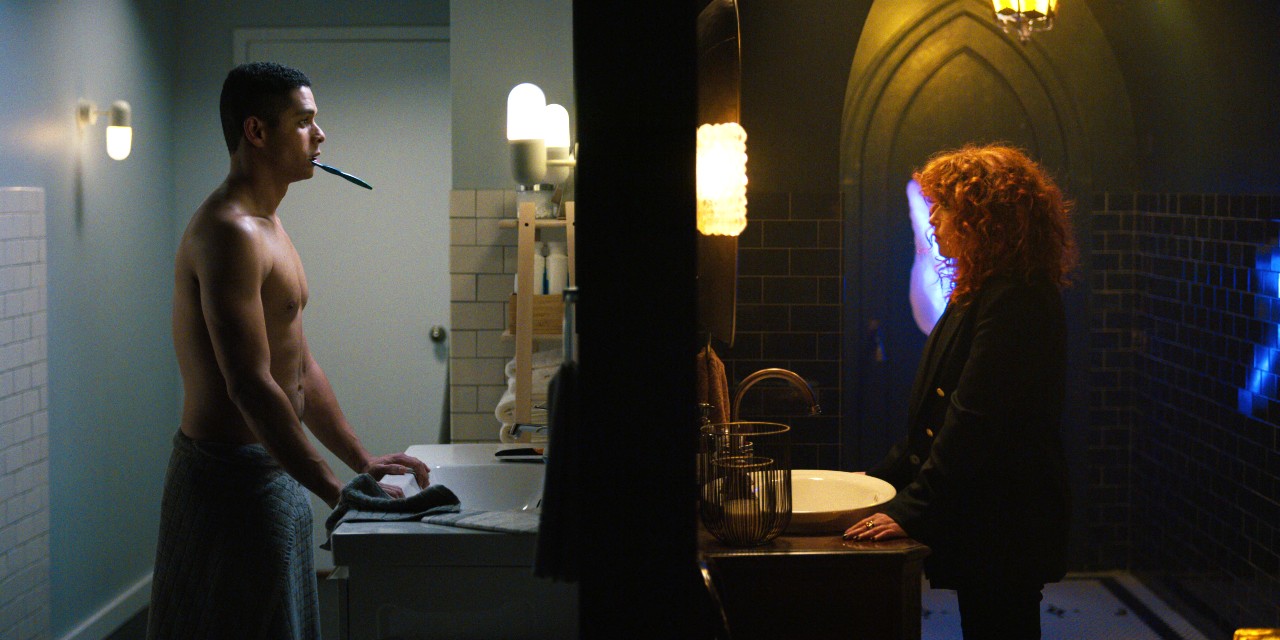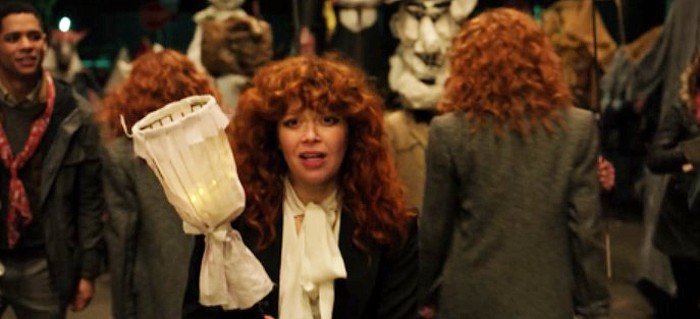
Russian Doll’s first season was a bleak, beautiful philosophical experiment that wrestled with some of life’s most perplexing questions. It was alternate timelines and recurring death loops and missing deli cats and birthday chickens, all wrapped up in ketamine-laced fever dreams that forced its main characters, Nadia (Natasha Lyonne) and Alan (Charlie Bartlett) to reckon with their past trauma and finally move on from it.
But, as memorable as the show’s first season was, it also debuted nearly three years ago — before global pandemics and international conflicts and Will Smith Oscar slaps clogged the timeline. So, if you’re having a bit of trouble remembering exactly what went down in its physics-defying finale, you really shouldn’t feel bad about it. A lot has happened since Natasha Lyonne coined a new pronunciation of the word “cockroach,” and no one can blame you for not keeping track of the show’s many intersecting timelines. Still, if you plan on binging season two when it lands on Netflix April 20th, you’ll likely need a quick refresher. We’re here to help with that.
Here’s exactly what the hell went down in Russian Doll’s season one finale.

Throughout the show’s first season, Nadia was stuck in a purgatorial time loop. A loner with a tough exterior shell and a hell of a lot of baggage, her mid-life crisis was filled with questionable drug use and hookups with sleazeball sex addicts. But, on the night of her 36th birthday, after heading home with a stranger and then venturing out in search of her missing cat, Nadia was struck dead by a speeding taxi. It’s where her story should’ve ended, and yet, she woke up again (and again, and again) in the bathroom at her friend’s place — a party raging outside, an Israeli joint waiting to be offered, and the same people repeating the same patterns from the timeline before. On her quest to figure out why the universe was f*cking with her, she met Alan, an uptight, deeply-depressed young man stuck in his own loop. Alan’s death may have been intentional while Nadia’s was accidental but they both had the same amount of trauma and bad life choices to work through and it seemed someone or something was urging them to do it together.
By the end of the season, Nadia and Alan’s extinction was on the horizon. Sure, they had died multiple times, but despite the cyclic nature of their resurrections, time was still moving in a linear fashion. Fruit was rotting. Friends were disappearing. The end, like the real end, felt very near. And to avoid it, Nadia had to confront her guilt of her mother’s death by rediscovering her inner child and her ferocious will to live while Alan had to forgive his ex-girlfriend (and himself) for their shared unhappiness. But fixing one problem simply created another and, by the show’s final episode, Nadia and Alan found themselves in separate timelines.
An enlightened Nadia (donning a white shirt with her usual black getup) had to prevent a previous version of Alan from committing suicide while an enlightened Alan had to convince the earlier version of Nadia not to go down her preferred path of self-destruction. The conundrum was hinted at in the episode’s name, “Ariadne,” a reference to the Greek myth about a woman who must lead the man she loves out of an intricate labyrinth that houses a monster inside. She does so with a sword, so he can slay the beast, and a string, so he can find his way out of the maze. Now that Nadia and Alan had both slain their own demons, the universe was testing whether they could help each other find a way out of the time loop on their own. It was a full-circle moment illustrated with some pretty cool split-screen visuals and a Fellini-esque final sequence involving a parade of homeless people in Tompkins Square Park. But, eagle-eyed fans quickly noticed that while the “real” Nadia (with the white shirt) was walking with the parade after the split-screen had fused, two versions of her past self brushed past her, walking in the opposite direction.
So, what did it all mean? Were Alan and Nadia in the same timeline? Were multiple versions of Nadia existing at once?

Yes, and yes. But also, no.
Lyonne recently told Variety that the ending is “subjective.”
“It’s their present. So you’re actually looking at both the Alpha Nadia and Alan — but that doesn’t mean the Beta Nadia and Alan are not there,” she said. “But I do think people experienced it as an actual split, that you’re looking at Alpha Nadia with Beta Alan.” The plan initial was to create a kind of multiverse, which means we could check in with these other versions of Nadia and Alan in the future. But for season two, the show seems to be sticking with Alpha Nadia and Alpha Alan, catching up with them a few years later and they dive deeper into their pasts by way of a time portal.
“Rather than doing all this backward exposition to tie together the intervening three and a half years, the idea is, whatever iteration of it it is, Alpha Nadia and Alpha Alan are here and now, being faced with the question of, now that I’m not dying, how do I start living?” Lyonne explained. “When you strip away the fat of a lot of this high-concept sci-fi stuff, that really is at the heart of the question from a character standpoint this year.”
So it seems like, while the issue of multiple Nadias and Alans hasn’t fully been resolved, the final versions of both characters are the ones we’ll meet in season two and, instead of confronting death, they’ll be figuring out what it looks like to actually live.
‘Russian Doll’ will return on April 20.
